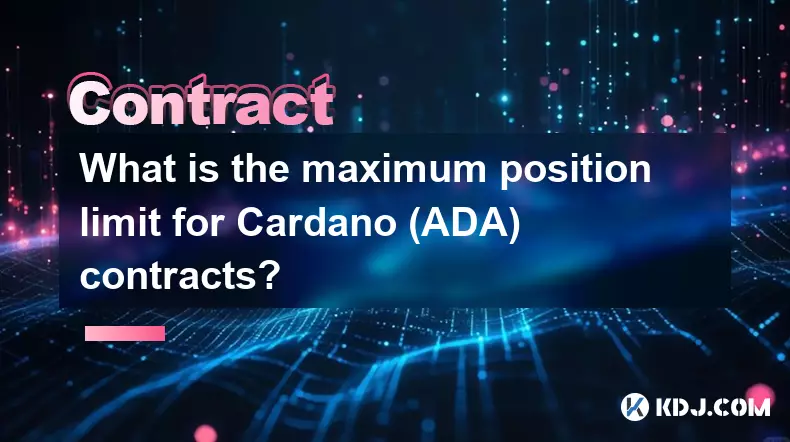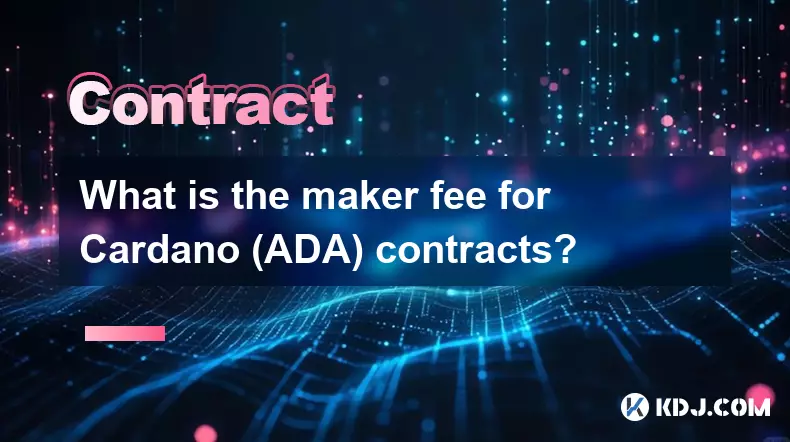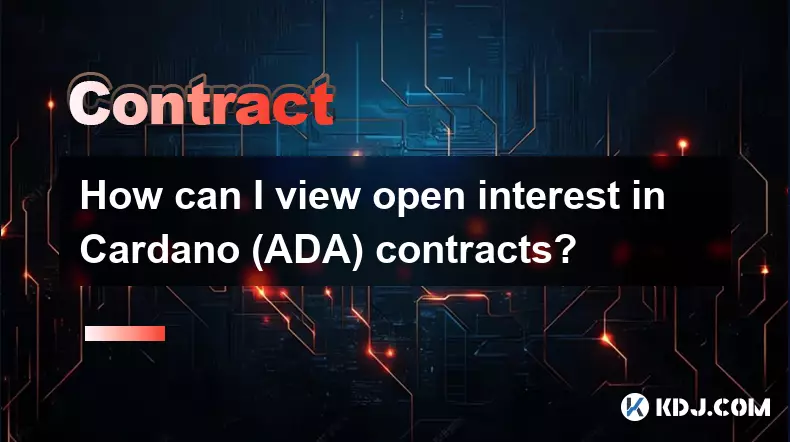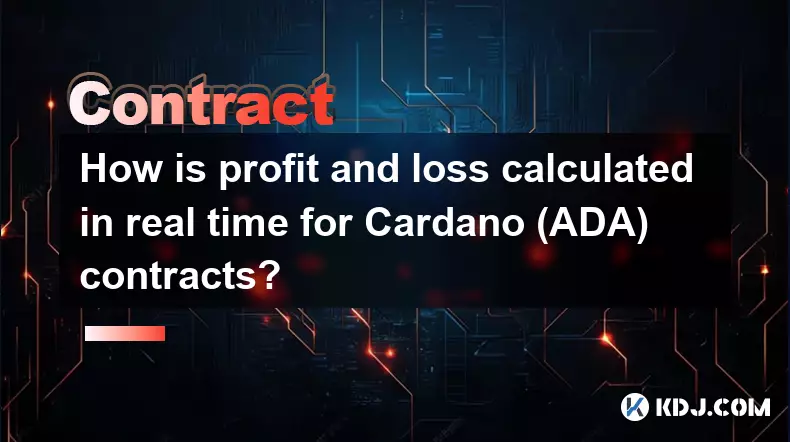-
 bitcoin
bitcoin $109667.069529 USD
-3.03% -
 ethereum
ethereum $3936.685804 USD
-4.07% -
 tether
tether $1.000493 USD
0.01% -
 xrp
xrp $2.771823 USD
-4.74% -
 bnb
bnb $957.805027 USD
-5.34% -
 solana
solana $196.735100 USD
-6.68% -
 usd-coin
usd-coin $0.999727 USD
-0.01% -
 dogecoin
dogecoin $0.227355 USD
-5.12% -
 tron
tron $0.335205 USD
-0.81% -
 cardano
cardano $0.779256 USD
-3.59% -
 ethena-usde
ethena-usde $0.999900 USD
-0.06% -
 hyperliquid
hyperliquid $42.492095 USD
-6.61% -
 chainlink
chainlink $20.501853 USD
-4.34% -
 avalanche
avalanche $28.952606 USD
-11.21% -
 stellar
stellar $0.356038 USD
-3.93%
What is cryptocurrency contract trading
Cryptocurrency contract trading enables traders to speculate on future crypto prices without owning the assets, providing a platform for risk management and leverage utilization.
Oct 08, 2024 at 10:37 am

Cryptocurrency contract trading is a type of financial derivative that allows traders to speculate on the future price of cryptocurrencies without physically owning them.
Basics of Cryptocurrency Contract TradingUnderlying Asset: Cryptocurrency contract trading is based on the value of underlying cryptocurrencies, such as Bitcoin, Ethereum, or Litecoin.
Contract Types: There are two main types of cryptocurrency contracts: futures and perpetual contracts.
Futures Contracts: Futures contracts are agreements to buy or sell a specific quantity of a cryptocurrency at a predefined price on a future date.
Perpetual Contracts: Perpetual contracts are similar to futures contracts, but they do not have an expiration date and can be traded continuously.
Leverage: Cryptocurrency contract trading often involves using leverage, which allows traders to control larger positions with less capital.
Speculation on Price Movements: Traders can speculate on the future price of cryptocurrencies without taking delivery of the actual coins.
Hedging Risks: Institutional investors and traders can use cryptocurrency contracts to hedge against price fluctuations in their underlying portfolios.
Leverage: Leverage allows traders to amplify their potential profits, but it also increases their potential losses.
24/7 Trading: Cryptocurrency contract trading platforms operate 24/7, offering traders access to the market at any time.
Volatility: Cryptocurrency markets are known for their high volatility, which can lead to significant price swings and potential losses.
Leverage: As mentioned earlier, leverage can both amplify profits and losses. In a market downturn, traders using high leverage may face margin calls or liquidations.
Counterparty Risk: Traders are exposed to counterparty risk when using cryptocurrency contract trading platforms. A platform's insolvency or unwillingness to honor contracts could result in losses.
Regulatory Uncertainty: The regulatory landscape for cryptocurrency contract trading is still evolving, which can create uncertainty and potential risks for traders.
Choose a Trading Platform: Select a reputable cryptocurrency contract trading platform that offers the desired features. Consider factors such as security, fees, liquidity, and customer support.
Fund Your Account: Deposit funds into your trading account using supported payment methods, such as cryptocurrency or bank transfers.
Select a Cryptocurrency Pair: Determine which cryptocurrency contract you wish to trade, such as BTC/USDT or ETH/USD.
Place an Order: Enter the contract type, order type, quantity, and leverage you wish to use.
Monitor the Market: Track the price movements of the underlying cryptocurrency and adjust your positions accordingly.
Cryptocurrency contract trading offers traders the opportunity to speculate on the future price of cryptocurrencies, hedge risks, and leverage their positions. However, it is important to be aware of the risks involved and trade responsibly. By understanding the basics, benefits, and risks of cryptocurrency contract trading, traders can make informed decisions and potentially capitalize on market movements.
Disclaimer:info@kdj.com
The information provided is not trading advice. kdj.com does not assume any responsibility for any investments made based on the information provided in this article. Cryptocurrencies are highly volatile and it is highly recommended that you invest with caution after thorough research!
If you believe that the content used on this website infringes your copyright, please contact us immediately (info@kdj.com) and we will delete it promptly.
- Bitcoin Crash Watch: Glassnode Signals Potential Cooling Phase
- 2025-09-26 20:25:12
- Bitcoin's Slow Grind: Is the Crypto Market Primed for a Burst?
- 2025-09-26 20:25:12
- BePay, Bitcoin Rewards, and Web3 Investments: A New Era in Dubai
- 2025-09-26 20:30:01
- Spinning Wheels, Fundraisers, and Crypto Traction: What's the Connection?
- 2025-09-26 20:30:01
- Cryptos to Watch: BlockchainFX, Remittix, and the Meme Coin Mania
- 2025-09-26 20:30:01
- Euro Stablecoin, Banks, and the BEST Wallet Token: A New Era for Digital Finance?
- 2025-09-26 20:30:15
Related knowledge

How do I enable the "scalping-only" mode for Cardano (ADA) contracts?
Sep 24,2025 at 03:19am
Understanding Scalping Strategies in Crypto Derivatives1. Scalping in cryptocurrency trading refers to executing multiple short-term trades within min...

What is the maximum position limit for Cardano (ADA) contracts?
Sep 23,2025 at 11:00pm
Understanding ADA Futures and Derivatives Market Structure1. Cardano (ADA) futures contracts are offered by several major cryptocurrency derivatives e...

What is the maker fee for Cardano (ADA) contracts?
Sep 26,2025 at 09:01am
Understanding Maker Fees in Cardano (ADA) Contracts1. The concept of maker fees applies broadly across decentralized exchanges and smart contract plat...

How can I view open interest in Cardano (ADA) contracts?
Sep 24,2025 at 07:36am
Understanding Open Interest in Cardano Derivatives1. Open interest refers to the total number of outstanding derivative contracts, such as futures or ...

What is the function of the insurance fund in Cardano (ADA) contracts?
Sep 24,2025 at 02:18am
Understanding the Role of Insurance Funds in Cardano Smart Contracts1. The insurance fund within Cardano's ecosystem is not a native feature directly ...

How is profit and loss calculated in real time for Cardano (ADA) contracts?
Sep 26,2025 at 04:18pm
Understanding Real-Time Profit and Loss in Cardano (ADA) Contracts1. Real-time profit and loss (P&L) calculations for Cardano-based smart contracts re...

How do I enable the "scalping-only" mode for Cardano (ADA) contracts?
Sep 24,2025 at 03:19am
Understanding Scalping Strategies in Crypto Derivatives1. Scalping in cryptocurrency trading refers to executing multiple short-term trades within min...

What is the maximum position limit for Cardano (ADA) contracts?
Sep 23,2025 at 11:00pm
Understanding ADA Futures and Derivatives Market Structure1. Cardano (ADA) futures contracts are offered by several major cryptocurrency derivatives e...

What is the maker fee for Cardano (ADA) contracts?
Sep 26,2025 at 09:01am
Understanding Maker Fees in Cardano (ADA) Contracts1. The concept of maker fees applies broadly across decentralized exchanges and smart contract plat...

How can I view open interest in Cardano (ADA) contracts?
Sep 24,2025 at 07:36am
Understanding Open Interest in Cardano Derivatives1. Open interest refers to the total number of outstanding derivative contracts, such as futures or ...

What is the function of the insurance fund in Cardano (ADA) contracts?
Sep 24,2025 at 02:18am
Understanding the Role of Insurance Funds in Cardano Smart Contracts1. The insurance fund within Cardano's ecosystem is not a native feature directly ...

How is profit and loss calculated in real time for Cardano (ADA) contracts?
Sep 26,2025 at 04:18pm
Understanding Real-Time Profit and Loss in Cardano (ADA) Contracts1. Real-time profit and loss (P&L) calculations for Cardano-based smart contracts re...
See all articles










































































